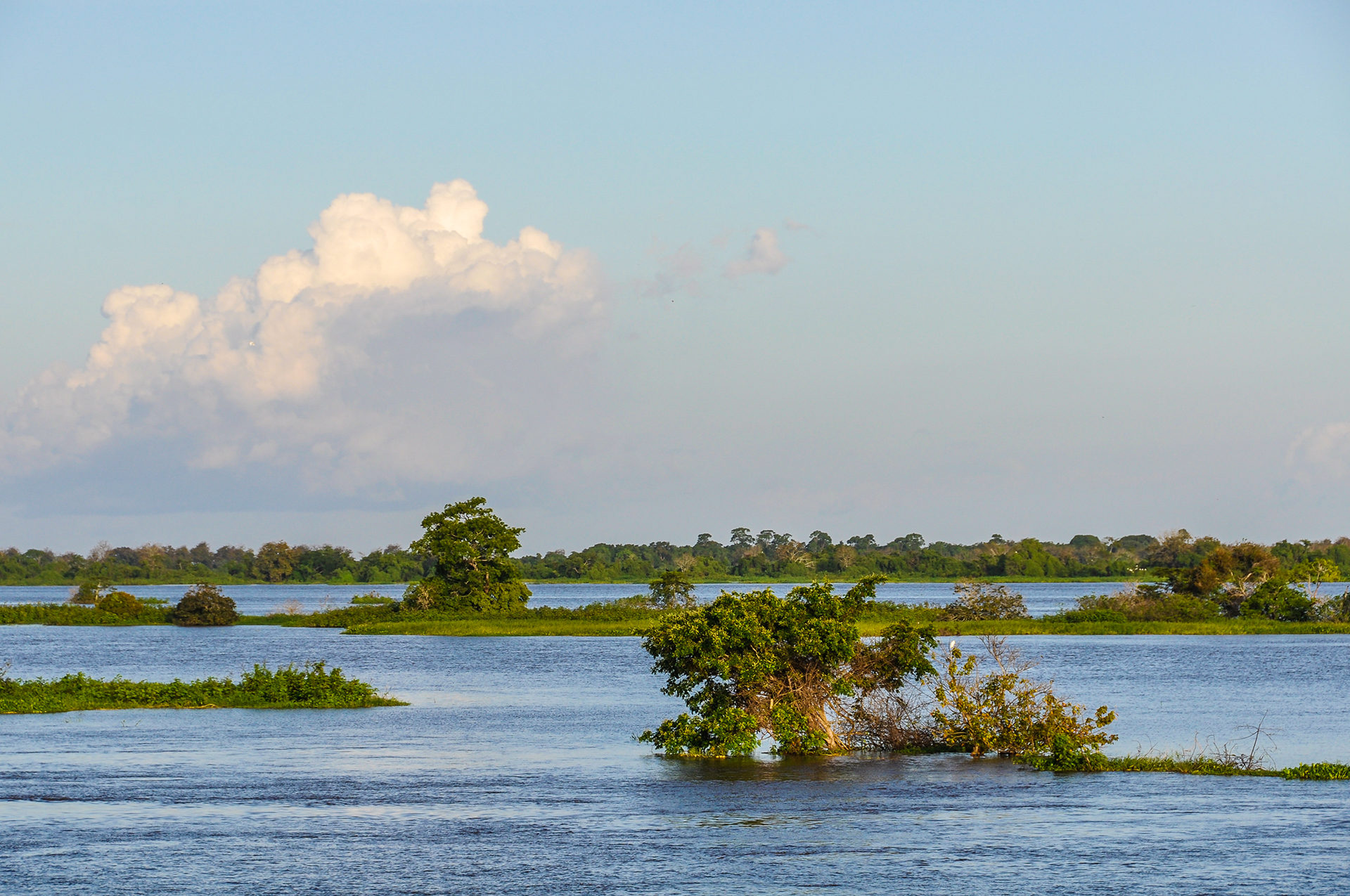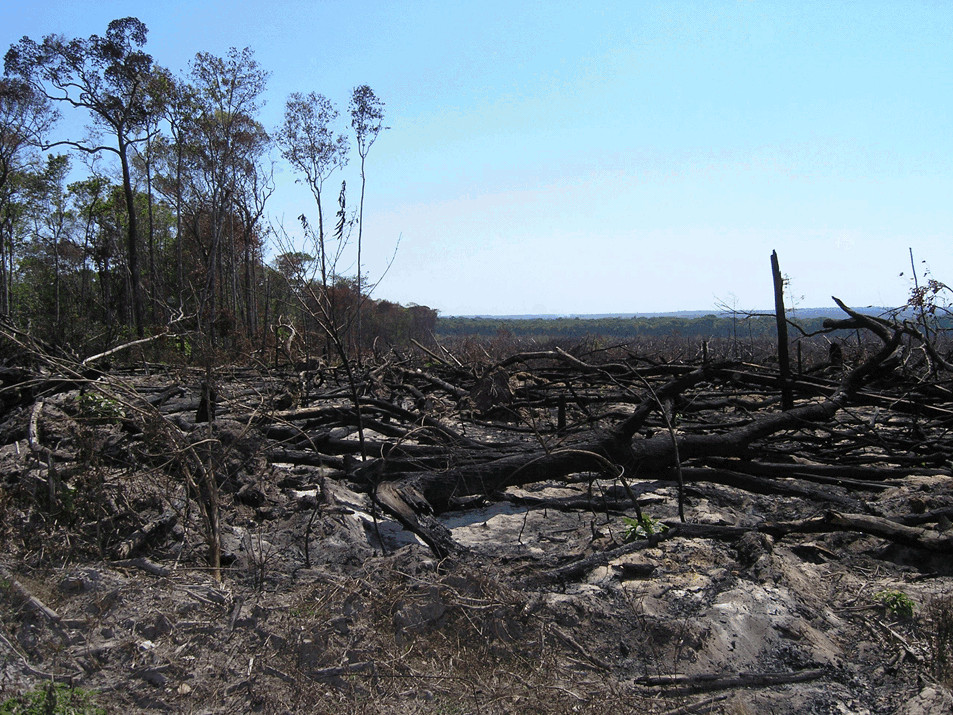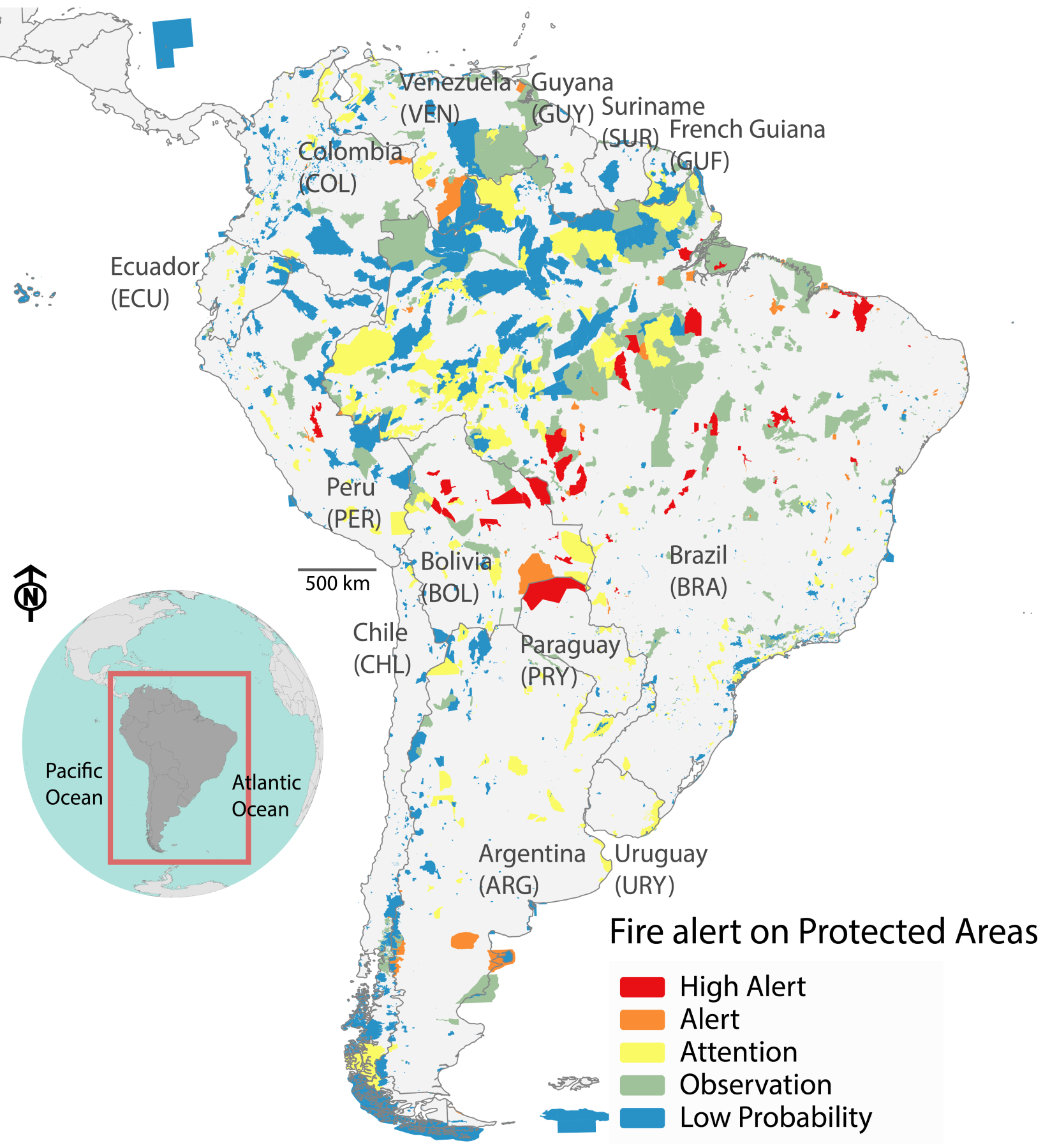Studying extreme events in Brazil - WCSSP case study
Research from the Climate Science for Service Partnership Brazil project is developing our understanding of extreme events and advancing forecasting capability
Globally, extreme weather and climate events have become five times more frequent over the last 50 years. According to the World Meteorological Organization, half of these events have been caused by weather and climate hazards, which have cost over US$ 3.64 trillion in losses between 1970 and 2019.
Despite the increase in extreme events, the number of deaths has decreased thanks to proactive disaster management enabled by early warning systems. However, in many regions these systems are yet to be fully developed and further research is required to understand the drivers of extreme events, how they are changing with increasing emissions and how well they can be forecast. Developing forecasting systems that can provide warnings early enough is crucial for guiding disaster management strategies.
In Brazil, the diverse nature of the climate means multiple hazards pose a threat to public health, agriculture, infrastructure and the economy. The CSSP Brazil project is developing science required to support essential climate services in Brazil. Knowledge gained through this research is already advancing forecasting capability for extreme events, which may help to further develop disaster management plans and reduce impacts.
Research from the project has been collated in a special issue of the Royal Meteorological Society’s Climate Resilience and Sustainability journal.
Find out more about some of the new science and how CSSP Brazil has been developing understanding of the following types of extreme events.
Rainfall
How are extreme events changing?
The frequency and intensity of weather and climate extreme events across the globe is already changing, with many regions seeing greater impacts compared to pre-industrial times. For individual events, attribution studies can inform us about how human-induced climate change has altered the likeliness of the event occurring.
 Extreme rainfall, or lack thereof, is the dominant climate hazard in Brazil, with flooding, drought and landslides linked to around 70% of weather-related disasters. Collaborative work through CSSP Brazil has investigated the link between some recent flooding events and climate change. One such study, led by the National Institute for Space Research (INPE), focussed on the 2020 floods in the south-eastern Minas Gerais region, which resulted in more than 50 deaths and the displacement of over 90,000 people. The results of the study found such an event, in which 97% of the average monthly rainfall fell in just three days, was 70% more likely to occur in the current climate compared to a world with no human-induced climate change. Similarly, in north-east Brazil, a study led by the National Centre for Monitoring and Early Warnings of Natural Disasters (CEMADEN) found flooding events of the Parnaiba River in 2018, 2019 and 2020 were made ~30% more likely.
Extreme rainfall, or lack thereof, is the dominant climate hazard in Brazil, with flooding, drought and landslides linked to around 70% of weather-related disasters. Collaborative work through CSSP Brazil has investigated the link between some recent flooding events and climate change. One such study, led by the National Institute for Space Research (INPE), focussed on the 2020 floods in the south-eastern Minas Gerais region, which resulted in more than 50 deaths and the displacement of over 90,000 people. The results of the study found such an event, in which 97% of the average monthly rainfall fell in just three days, was 70% more likely to occur in the current climate compared to a world with no human-induced climate change. Similarly, in north-east Brazil, a study led by the National Centre for Monitoring and Early Warnings of Natural Disasters (CEMADEN) found flooding events of the Parnaiba River in 2018, 2019 and 2020 were made ~30% more likely.
How is CSSP Brazil research being utilised?
As the number and severity of extreme events across Brazil are projected to continue to increase, it is more important than ever to provide early warnings, with enough spatial detail, to support disaster risk reduction strategies.
A flood-forecasting model for the Negro River has been developed through the partnership. Due to the time taken for water to flow through the floodplain to the river, rainfall from November to February can be used to predict the risk of flooding in the following May to July period. The project, led by Dr Amulya Chevuturi, whilst at the University of Reading, in collaboration with Brazilian scientists from various partner institutes, has shown forecasts of high water levels have skill 1-2 months in advance. This forecast was successfully used during flooding in 2021, as Dr Amulya Chevuturi explains: "The models forecasted flood greater than 29 metres for 2021, a level beyond which a flood emergency is declared by the Brazilian Government for Manaus." This information enabled decision makers to prepare for the flood event, reducing the impact to people and properties.
Wildfire
 Photo Credit: Liana Anderson
Photo Credit: Liana Anderson
How are extreme events changing?
Understanding how fire events will change in the future is crucial not only for disaster management and adaptation planning, but also for determining how ecosystems could respond. South America contains a diverse range of ecosystems, including the Amazon rainforest and the Cerrado and Caatinga savanna and grassland ecosystems. These ecosystems provide important ecosystem services such as being large stores of carbon and are thought to be acting as a substantial carbon sink, offsetting global emissions.
However, recent work suggests some parts of the Amazon may have already transitioned to becoming a source of carbon. Research published earlier this year, led by the Met Office in collaboration with INPE and CEMADEN, found that a shift to hotter and drier conditions in the future could result in a greater burned area and resultant fire emissions. With global warming limited to 1.5°C above pre-industrial, climate model experiments show a reduction in carbon storage of 7%, however, if warming were to increase to 4°C, the loss of carbon storage from these ecosystems could be as much as 30%. This work highlights the importance of understanding the link between climate change, fire risk and the carbon cycle and could be used to inform fire and land-use management strategies.
How is CSSP Brazil research being utilised?
Knowledge developed through CSSP Brazil is already being implemented on the ground. Since August 2020, seasonal forecasts have been used to highlight priority areas with a high probability of fire three months in advance. Lead author Dr Liana Anderson at CEMADEN describes how these forecasts have been used to support planning activities to mitigate the impact of fires.

“This product has been used as part of the "Operational plan for preventing and combating forest fires of Rede Serra do Amolar Protected Area - 2021" which was released on the 5 October 2021 Moreover, a capacity building event was held for a team of 24 fire fighters and volunteers from Acre State in July 2021. The product results are now presented at a monthly impacts meetings with civil defence workers, firefighters and other stakeholders and a monthly newsletter is also in development, which will update all interested parties.”
With the number of fires in South America the highest in 2020 since records began in 1998, it is hoped that this early warning system can be adapted to provide insight into fire risk in other parts of the continent, and further afield.
How is CSSP Brazil research developing our understanding of extreme events?
To improve the forecasting of extreme events, we need a good understanding of the meteorological conditions associated with them. Research published earlier this year by scientists at the University of Oxford together with CEMADEN, analysed data from 2001-2015 to study how the conditions associated with large fires varied across Brazil. “The identification of distinct fire weather regimes that, in the case of hot-drought driven fires, have predictors as much as five months prior to large fire outbreaks, could lead to improved fire risk forecasts for Brazil. Any improvement in forecasts can lead to greater preparedness in the affected areas and help to reduce the impact of such devastating large fires”, explains Dr Sarah Sparrow from the University of Oxford.
This new knowledge could be used to improve the forecasting of fire risk, which in turn could enable early decision-making and help to protect lives. Lead author Dr Sihan Li from the University of Oxford explains how. “Our results highlight that understanding the variability of the meteorological conditions associated with large fires is essential for developing spatially explicit forecasting, and future projections of large fire hazards, which are particularly important within the context of climate change for Brazil. We hope these findings will help to improve our grasp on large fire hazards in Brazil and to inform science-based fire and land management decision-making.”
Drought
How are extreme events changing?
Severe drought events in the Amazon have both local and global impacts on people and the environment. For example, droughts in this region can impact the global carbon cycle by decreasing tree health and the uptake of carbon via photosynthesis. Locally, among other impacts, drought events can lead to crop failure and poor harvests, reducing food security for the local population. It is therefore important to understand how the frequency and severity of drought events may change in order to develop both mitigation and adaptation strategies. A recent paper by Germano Ribeiro Neto from CEMADEN, with colleagues at INPE, studied the record-breaking drought during 2015 and 2016, which affected over 400,000km2 of forest in the Amazon basin. Their attribution study found an event of this magnitude was made 3.7 times more likely to occur due to human-induced climate change.
How is CSSP Brazil research being utilised?
Research led by Jose Marengo at CEMADEN has examined strategies currently used to manage drought events in north-eastern Brazil. In this region, 95% of agriculture is rain-fed and therefore very vulnerable to severe drought events. The review of adaptation initiatives finds that while strategies used for soil and water conservation and crop cultivation are well known in the region, there are often barriers to these being well-implemented. In addition, many of the traditional initiatives thought of as adaptation, such a credits for farmers and crop failure insurance, are found to be focussed on the short term rather than long term resilience. Examples of more successful strategies, such as integrated drought monitoring and seasonal forecasting are used to demonstrate the benefit of pro-active, rather than re-active, drought management in order to improve adaptive capacity.


